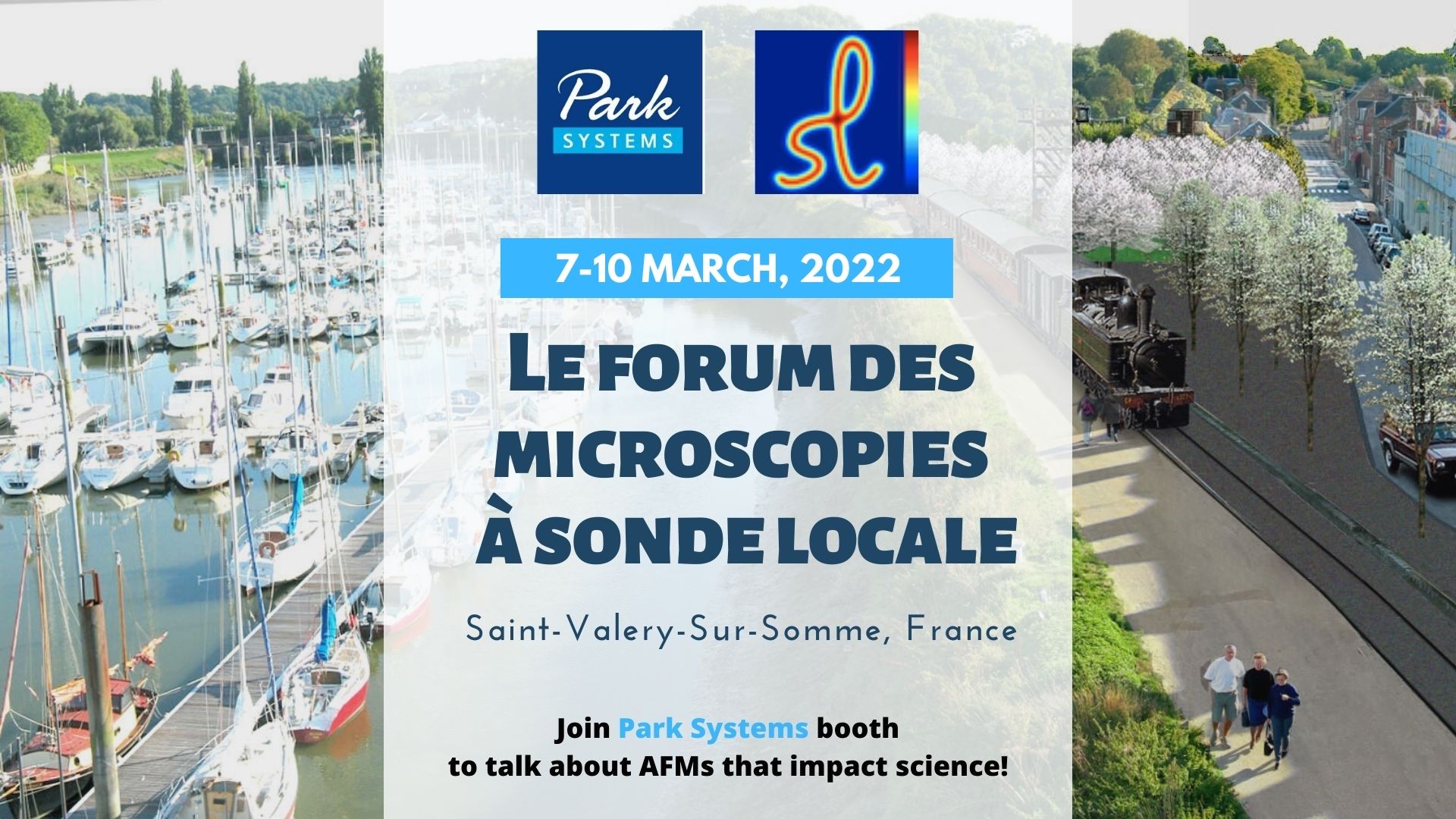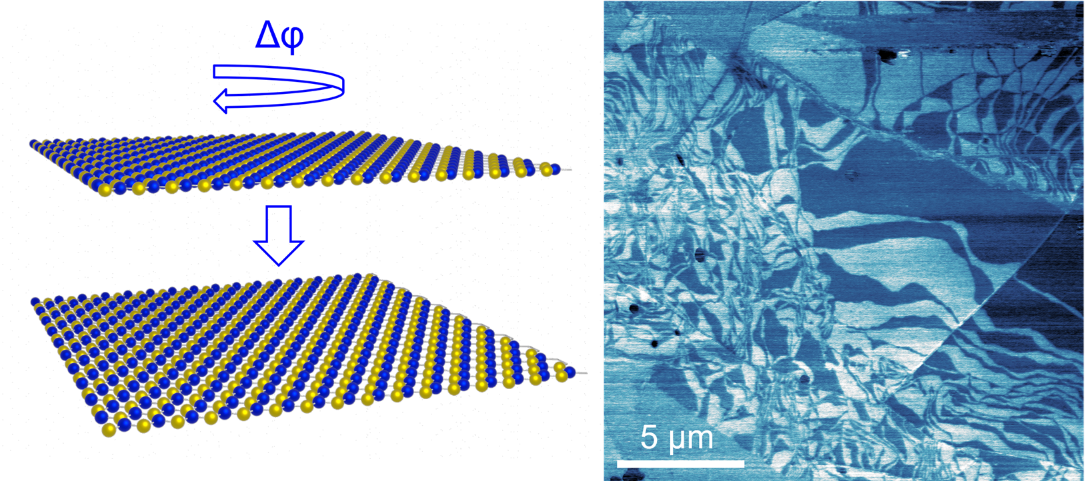
The 23nd Le forum des microscopies à sonde locale, the most important Atomic Force Microscopy meeting in France, will take place in the city of Saint-Valery on the Hauts-de-France coast on 7 - 10 March 2022. Park Systems is proud to announce its participation as an exhibitor!
Join us for THE LATE NIGHT AFM WORKSHOP:
"En explorant le potentiel du sideband KPFM" presented by Matthew Lefevre- Application Engineer, Park Systems France, Orsay, France
We will showcase the capabilities of the Park NX10, the High Resolution Research AFM, and the recently launched Park FX40 Automatic AFM with the innovative automation feature for more efficient nano-investigation, including wide range of nanomechanical, magnetic and electrical material characterization modes with a focus on new generation KPFM mode!
Le forum des microscopies à sonde locale
Register here: HERE
- Time: 7 – 10 March
- Venue: Cap Hornu Hotel and Restaurant, Saint-Valery-Sur-Somme
- Our location: Park Systems booth
About Le Forum des Microscopies à Sondes Locales:
Started in northern France (Sangatte, 1998), the Forum travels around different French locations with a few stops at the Belgian neighbors..
The forum brings together each year about 150 researchers. It has become a landmark French meeting for the community of near-field microscopy.
The spirit of this forum has not changed since 1998; its goal is to bring together French-speaking (mainly France, Belgium, Switzerland) community of scanning probe microscopies (AFM, STM, SNOM and related techniques), from established researchers to students or industry representatives, to discuss the latest developments in the field. These advances concern basic studies in nanoscience as well as application and instrumentation. The relevance of this forum is growing with the years as the atomic force microscopy constitute one of the major tools of nanotechnologies. The technique allows, at the nanoscale, to study the physical and chemical properties (mechanical, electronic, optical, biological ...) of surfaces and nanosystems.
Link: http://www.sondeslocales.fr/forum2022
ABSTRACT
Advances in Materials Nanocharacterization and Material Analysis: Exploring the Potential of the Sideband KPFM Mode
Matthew Lefevre1, Andrea Cerreta2, Ilka Hermes2, Victor Bergmann2, Charles Kim3
1 Park Systems France, Orsay, France
2 Park Systems Europe, Mannheim, Germany
3 Park Systems Corp, Suwon, South Korea
Presenter: Matthew Lefevre, Park Systems France, Orsay, France, mlefevre@parksystems.com
Kelvin Probe Force Microscopy (KPFM) is a scanning probe method that utilizes electrostatic forces between a nanoscopic, conductive tip and a sample for material characterization by mapping the distribution of the surface potential [1,2].
In the standard lift mode KPFM [3], the sample is first scanned in dynamic mode at close distance to retrieve its topography. During the second pass, the tip is retracted at a given lift distance and traces back the topography while electrically excited at the lever eigenmode frequency. Since the conductive tip is sensitive to the local gradient of the electrical field, one can minimize the amplitude or phase shift of the probe caused by such a gradient by applying a counteracting voltage on the tip, which would exactly compensate the sample potential at each pixel. This allows to detect and image the potential variation along each line of the scanned frame.

Ferroelectricity is observed in hexagonal boron nitride(hBN) through control of the registry of stacked layers, which we explore through both amplitude-modulated and sideband Kelvin probe force microscopy (KPFM) on the Park FX40 automatic AFM. A schematic of the formation of parallel stacked bilayer hBN is shown in addition to a contact potential difference map measured using sideband KPFM
However, this dual-pass mode has several technical drawbacks. First, due to the lift height the electrical signal measured by the tip is necessarily an averaged contribution of a larger area of the sample during second pass, which implies a loss in lateral resolution. Second, since the tip needs to scan each line twice, a longer image acquisition time must be considered. On the other hand, a simultaneous mechanical and electrical excitation of the lever at its resonant frequency would cause a severe crosstalk between topographic and electrical signals.
In Park Systems tools, we are currently implementing the new sideband KPFM mode, which allows for simultaneous imaging of the topography and surface potential with a high spatial potential resolution and improved sensitivity with respect to lift mode and other KPFM (e.g., off-resonance) methods. Here, the topography is detected at the resonance of the cantilever, while the electrical drive of the KPFM is applied at much lower frequencies between 1 and 4 kHz. Due to frequency mixing, satellite peaks or sidebands appear in 1 and 4 kHz from the resonance. The parallel detection of both excitations is feasible due to the presence of multiple lock-ins in the Park NX default electronics. Since the KPFM signal is detected on the sidebands and the topography is detected on the resonance, both signals can be measured simultaneously.
[1] U. Zerweck et al., Phys. Rev. B 71 (2005) 125424.
[2] A. Axt et al., Beilstein J. Nanotechnol. 9 (2018) 1809-1819.
[3] H. O. Jacobs et al., Ultramicroscopy 69 (1997) 39-49.




